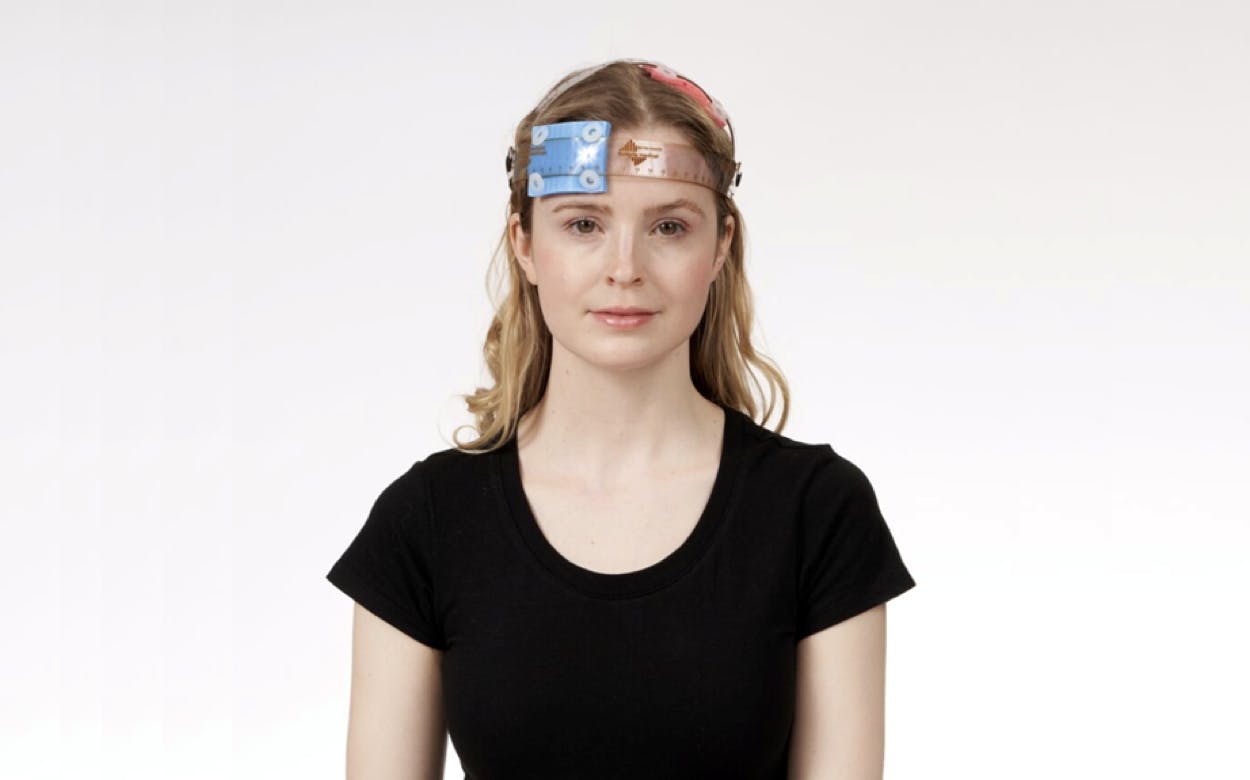Neurostimulation to cure Long COVID symptoms

Sharing COVID-specific news is a difficult topic for us. In general, we simply know too little about the disease, including its impact and the relevant research, to make valid statements.
What we do know, however, is that Long COVID is real, and that it may be more widespread than we realize. Every valid, evidence- and science-based treatment trial is therefore important, no matter how far away it is from official approval.
Last week with great attention, we read an article from IEEE Spectrum about the potential of neurostimulation in the fight against Long COVID symptoms. The magazine has published a long article on first pilot studies that test electrical treatments for the still mysterious health effects of COVID-19.
We have already covered neurostimulation and brain implants a few times in our “we become cyborg” series. And yet it still sounds like science fiction, when you read that zapping the brain with electricity in your home via a connected headband could have the potential to alleviate Long COVID symptoms.
So here’s what we learned:
Small and non-controlled studies offer promising results
Neurostimulation, like many other medical fields, has looked for ways to combat COVID and its effects since the outbreak of the pandemic. This is underpinned by a request from the U.S. Food and Drug Administration (FDA), IEEE reports. The department is actively seeking remote and scalable treatment options for COVID-19 patients.
In response to this call, a team at the NYU Grossman School of Medicine conducted a still small and non-controlled but promising neurostimulation study. They used a headband fitted with electrodes that can be controlled remotely. The individual neurostimulation sessions help alleviate patients' symptoms, including brain fog, fatigue, headaches, emotional dysregulation, and other problems. So far, the study group features only a handful of people. The results, however, are promising and a larger trial will soon follow.
A team from the Medical University of South Carolina led by Mark George is taking a different approach. They provided patients with an iPad for telemedicine consultations, a vagus nerve stimulation device, and a wearable intensive care unit that measures heart rate, oxygen saturation, and blood pressure. Patients attend two one-hour sessions six days a week. The result: reduced brain fog, higher energy, and improved anxiety.
Researchers in Brazil even believe neurostimulation in the acute phase of an infection can help shorten time on the ventilator.
The early stage of the research does not allow for valid conclusions
As with all early-stage medical research, scientists are discovering positive effects. However, there is a lack of knowledge involving the reasons for these effects. Too many symptoms, and too many patients with different histories and different lifestyles, are encountering still experimental treatments in too short a time.
There is still a lot of missing data that must be uncovered before experts can make more accurate conclusions about Long COVID in general, and about neurostimulation for the treatment of Long COVID in particular.
It is not yet clear why neurostimulation offers protection against Long COVID symptoms. This is why researchers are counting on larger studies that could shed light on how neurostimulation affects the neurology of people with Long COVID.
A key problem is that the incidence of Long COVID is difficult to measure. A large Long COVID meta-analysis based on 47,910 participants demonstrated that after SARS-CoV-2 infection, 80% of study participants experienced one or more long-term symptoms. It’s a wicked situation. But we can assume that millions of people around the world are in need of treatment.
The future of zapping our brains is near
This demand presents an unprecedented opportunity for research and related funding. Marom Bikson, co-founder and CEO of Soterix Medical, a company that develops neuromodulation and brain stimulation devices, told IEEE that he believes the neurostimulation field is currently at a turning point. He thinks that in the coming years, millions of people could be fitted with neurostimulators. These devices will hopefully treat not only COVID symptoms, but others as well.
We think he’s right. There’s the old Plato saying that a need or problem encourages creative efforts to meet the need or solve the problem. Necessity is the mother of invention. With all the terrible things we have had to experience in the past few years, we can count on the fact that medical science and research are now equipped with significantly more money and dispositions than they were pre-COVID. This could lead to some medical breakthroughs in the coming years that would otherwise have been decades away due to small budgets and lack of media attention.
It’s crucial now to refrain from making unsubstantiated claims about the effects of neurostimulation. However, it is well within the realm of possibility that in the coming decades, we will solve some medical problems using networked headbands that stimulate our brains with electricity. Sometimes the future is closer than we think.